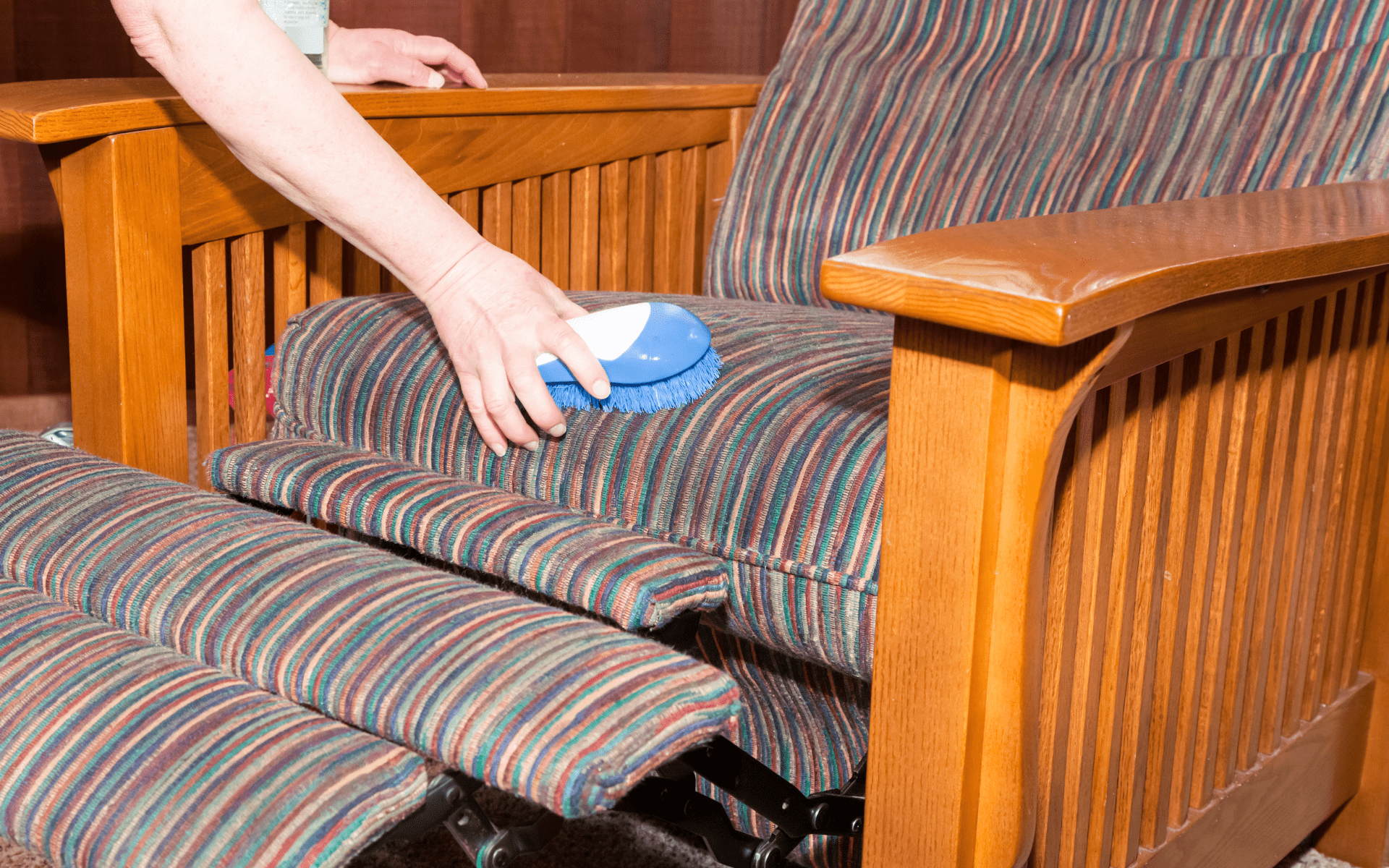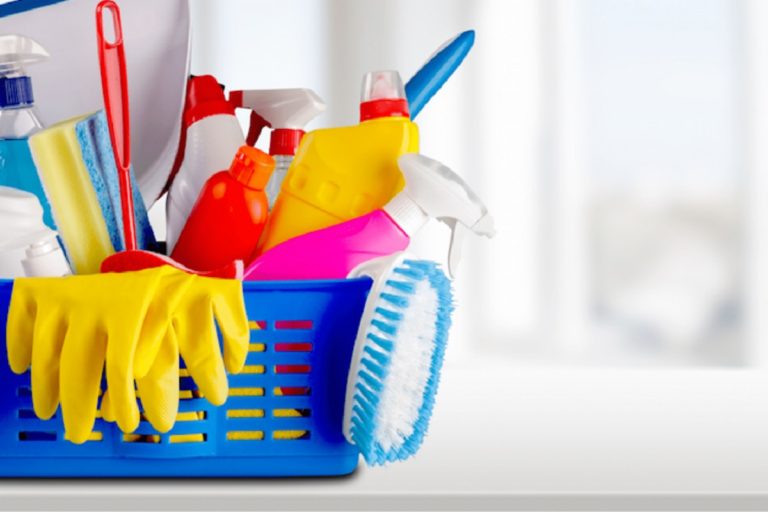Your home’s upholstered furniture sees a lot of wear and tear. From daily use to accidental spills, your sofas, chairs, and other upholstered pieces can start to look dingy and feel rough. Implementing a regular upholstery cleaning checklist is the best way to care for your investment in quality furniture. Before you hire a cleaning company, this comprehensive guide will walk you through everything you need to know.
The Importance of Routine Upholstery Care
Upholstered furniture is often expensive, so you’ll want it to last. Plus, clean upholstery not only looks better but can also help provide a healthier indoor environment. Here’s why routine care is so critical:
- Extend furniture lifetime – Regular cleaning keeps fabrics from wearing out prematurely. It also prevents stains from setting that can be impossible to remove later.
- Improve air quality – Over time, upholstery traps allergens, pollen, pet dander, and other pollutants. Thorough cleaning removes these asthma and allergy triggers.
- Prevent mold and mildew – Moisture allowed to linger can lead to mold growth in upholstery. Cleaning inhibits this health hazard.
- Maintain appearance – From subtle dirt buildup to obvious stains, unclean fabrics simply don’t look as nice. Proper maintenance keeps your furniture visually appealing.
When upholstery gets dirty, the only solution is a complete cleaning process. Half-measures like vacuuming or spot cleaning alone just won’t cut it.
The Upholstery Cleaning Process Step-By-Step
Cleaning upholstery may sound straightforward, but there are right ways and wrong ways to get the job done. Follow these steps for furniture that looks, feels, and smells freshly cleaned.
1. Pre-Inspect Furniture
Before you start the actual cleaning work, take a few minutes to thoroughly inspect all upholstered items. This helps in several ways:
- Identify problem areas or set-in stains needing extra attention
- Determine the best cleaning method based on fabric types
- Look for damage like loose threads or cushioning issues
- Check tags for the manufacturer’s cleaning code recommendations
Make notes on specific areas to attend to or repairs needed so that you don’t forget.
2. Vacuum First
Always start by thoroughly vacuuming all upholstered surfaces, including crevices and hard-to-reach spots. Use various vacuum attachments to lift and remove dirt, dust mites, crumbs, and other debris.
Vacuuming serves several important prep functions:
- Lifts dirt so detergent can dissolve stains underneath
- Removes loose particulates that could grind into fabric
- Clears pet hair and lint to prevent matting
- Allows cleaning solutions to penetrate better
3. Pre-treat Stains
Check your pre-inspection notes and tackle any major stains before the main cleaning. Using a specially formulated pre-treatment solution:
- Identify stains – Circle stains so you know areas needing attention
- Spot test first – Check an inconspicuous spot to ensure the solution won’t discolor or damage that fabric type.
- Apply pre-spray – Lightly mist-stained and heavily soiled areas according to product directions. This helps lift stains so detergents work better.
- Let dwell for 5-10 minutes – Give cleaners time to work before extraction.
The Spruce Housekeeping sets guidelines to set stains by treating spots immediately with towels, premixed solution, or aerosol spray before professional service.
4. Steam Clean Fabric
Now comes the deep cleaning process. While a few very delicate upholstery fabrics must stay dry, most do extremely well with hot water extraction cleaning. Here is the method:
- Vacuum again – Go over all upholstery with the vacuum to remove any residual dirt or stains loosened by pre-sprays. This prevents them from redepositing during extraction.
- Pretreat again – Quickly re-apply stain pre-treatment solution to any remaining marks noted during this vacuuming.
- Extract with steam – Using a specialized steam cleaning wand and detergent, work over all fabric surfaces to inject steam and cleaning agents deep into the fibers. Extract immediately to lift stains and dirt back out.
- Detail heavily used areas – Use smaller attachments to thoroughly steam clean cushioned armrests, backs, and seats. Slow down and make multiple overlapping passes to cover comprehensively.
- Rinse with clean water – Switch out detergent for plain water and make finishing passes to rinse thoroughly. This prevents residue that attracts soil quickly. Check work until extraction water runs clean.
- Groom nap – For deeper piled upholstery fabrics, brush the damp nap to realign fibers evenly as they dry. This maintains a uniform attractive texture.
5. Allow Proper Dry Time
Fabrics must dry completely before using furniture or even replacing cushions. Wet upholstery leads quickly to water rings, discoloration, fabric distortion, and potential mold issues.
- Air out in sunlight – Open draperies to allow bright natural light to aid evaporation. Consider placing smaller damp items in direct outdoor sunlight.
- Use air movers – Position commercial air movers to continually circulate fresh air across damp upholstery.
- Check before replacing cushions – Upholstery beneath cushions must feel completely dry before replacing them. Even slight underlying moisture will breed mold.
Once thoroughly dry, the upholstery fabric looks brighter and feels soft and fresh again.
6. Consider Added Fabric Protection
For investment upholstery pieces getting regular use, add an extra anti-soil shield once thoroughly dry after cleaning. Options include:
- Waterproofers – Protect from future food or beverage spills
- Stain guard sprays – Repel oil and water-based stains
- Microsuede treatments – Restore velvety softness and grip
- Sunscreens – Guard lighter fabrics against UV damage
Reapplied once upholstery is clean and dry, these add durable invisible protection between professional fabric cleanings.
Know When to Call the Pros
While you can knock out small upholstery cleaning and spot jobs yourself with good results, some situations do require calling in certified upholstery cleaning pros.
Get an expert fabric cleaning service for:
- Heavily soiled or neglected furniture – If upholstery wasn’t cleaned routinely over its lifetime, embedded dirt and stains often need professional strengths and methods.
- Big projects – For whole-home fabric cleaning including living rooms, family rooms and dens with lots of seating and upholstered pieces tackle efficiently.
- Valuable antique or delicate fabrics – Vintage or weaker delicate fabrics require specialized solutions and methods to clean effectively without risk of damage.
- Water or smoking damage – Water promotes quick mold growth without fast expert extraction. Smoking residue causes lasting yellow stains and odors that need stronger treatments.
- Pet urine contamination – More than surface cleaning, urine soaks deep into padding underneath upholstery requiring disinfection and odor sealants.
Don’t take risks DIY cleaning upholstery when health hazards or permanent damage could result. The cost of a professional upholstery cleaning service is worthwhile protecting your investment and air quality.
Maintain Different Upholstery Materials Properly
Not all fabrics clean the same, so it’s essential to match methods to your specific furniture pieces. Below are tips for properly caring for common upholstery types in home furnishings.
Cotton
Most washable casual upholstered furniture uses durable, family-friendly cotton blends. Clean by:
- Vacuuming regularly
- Pre-treating stains quickly
- Steam cleaning every 6-12 months
Cotton stands up well to hot water extraction cleaning and air drying.
Microfiber
Often used for family room furniture, easy-care microfiber resists stains, wear, and pilling. Keep it looking new by:
- Vacuuming twice weekly
- Treating spills immediately
- Steam cleaning once a year
- Applying microfiber treatment monthly
Linen
Naturally, stain-resistant linen gets softer and richer looking over time. Proper care includes:
- Regular vacuuming
- Spot-cleaning spills promptly
- Steaming every year (or dry cleaning for silk linen)
Avoid over-wetting linen upholstery during cleaning.
Leather
Fine leather needs gentle care to maintain its supple feel and appearance.
- Dust frequently
- Wipe spills quickly
- Clean with leather cleaner 2-4 times per year
- Apply leather conditioner regularly
Never use steam or excess water to clean leather.
Velvet
Luxurious velvet shows every speck of dust and lint. Care includes:
- Weekly vacuuming
- Immediate stain attention
- Annual professional steam cleaning
- Avoiding direct sunlight
Brush velvet nap during drying to prevent permanent crush marks.
Common Types of Upholstered Furniture
Upholstery fabric covers all types of furniture pieces throughout your home. Different upholstered items see varying wear and stains based on their function and location.
Sofas
As primary seating gathering areas, sofas need frequent attention. Armrests in particular accumulate dirt, oil, food debris and drink spills from hands and snacking. Sofa backs and seats also hold lots of shed skin cells and embedded lint and pet fur.
- Vacuum cushions and under cushions weekly
- Treat stains immediately
- Steam clean every 6-12 months
Based on recommendations from the American Cleaning Institute, vacuum upholstery weekly and clean seats, arms, and backs thoroughly every 6-12 months.
Chairs
Like sofas, upholstered chairs serve as prime seating areas prone to spills, dirt, and wear from daily use. Areas to focus on cleaning include:
- Armrests
- Cushion seats
- Backs and sides
- Under-seat cushions
Combat grime buildup with regular vacuuming, immediate stain treatment, and periodic deep steam cleaning.
Sectionals
With their abundance of cracks and crevices along multiple seating areas, sectional sofas easily collect an abundance of crumbs, pet fur, and other debris that must be cleaned out from below and behind cushions regularly.
Pay special attention to:
- Middle-crease gunk traps
- Area rugs underneath
- Connection crevices
Ottomans
Upholstered ottomans typically feature padded cushion tops perfect for resting feet, so dirt, oils, and debris easily embed in the fabric. If serving double-duty storing blankets or board games inside, deep vacuuming and cleaning become even more critical.
Priority spots include:
- Padded lids
- Side and back panels
- Inside floors and sides if used for storage
Accent Chairs
Accent chairs sprinkled through bedrooms, nurseries, and other living areas require regular dusting and vacuuming along:
- Backs
- Arm panels
- Undersides
- Chair legs
- Fabric creases
Food and beverages pose less risk of stains in high-traffic areas, but regular deep cleaning still keeps them fresh.
Upholstery Needs Love!
With the right methods and regular attention, you can keep every type of upholstered furniture looking its best for years of use. Follow these comprehensive care steps to renew dingy upholstery or maintain the beauty of brand-new pieces. Be sure to tailor methods to each fabric material in your home.
No one wants to relax on dirty, unhealthy-feeling upholstery! With some discipline on proper cleaning, your furniture will stay comfortable, sanitary, and always ready to impress guests. Implement weekly and monthly care along with periodic deep cleaning and you’ll maintain upholstery investments to pass on.











